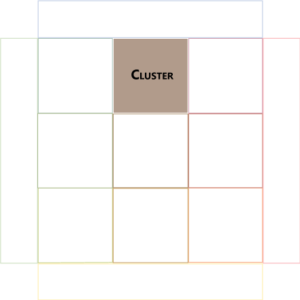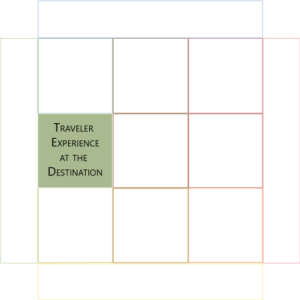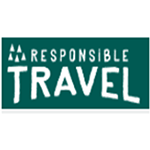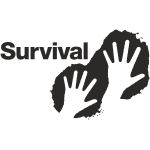
Unique Selling Proposition: Standing Out in the Sustainable Tourism Market by Meeting the Needs of Eco-Conscious Travelers.
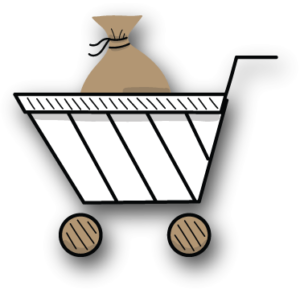
UNIQUE SELLING PROPOSITION (USP)
Creating a Sustainable Advantage through 12 questions
Key to Success
In this section, we would like to make sure that Small and Medium-sized Tourism Enterprises (SMTEs) should be aware of the following:
- Understanding how sustainable practices can create a Unique Selling Proposition for travelers and contribute to the business’s competitive advantage.
- Understanding how eco-conscious travelers prioritize sustainability when making travel decisions and how the business can appeal to this target audience by offering sustainable services.
- Understanding specific target segments based on their unique needs, preferences, and pain points and how they can develop a Unique Selling Proposition that resonates with these travelers.
Accomplishments
In this step, we’ll:
- Identify and promote a unique attribute or benefit of a product or service that sets it apart from competitors in the market.
- It aims to help businesses stand out and attract travelers by emphasizing their Unique Selling Proposition.
- It helps businesses differentiate themselves and create advantages.
Time-Saving Tools
We’ll complete all sections of this chapter more quickly if we have any of the following handy:
- The tourism destination market plan and strategic plan.
- Tourism road maps offered by the tourism destination.
- Cluster’s marketing plan and strategic plan.
- Our business plan, our business objectives, and our strategic business plan.
- The trade travelers and other relevant stakeholders.
- Tourism road maps offered by the tourism destination.
- The public policies that deal with the cluster.
- List of cluster members
- Cluster event calendar.
- Benchmarking innovation initiatives in the tourism destination.
- Risk analyses about innovation initiatives.
- Competitors analysis.
- Traveler feedback analysis.
- Value mapping analysis.
- All documents could be applied to find relevant information.
DIFFERENCE BETWEEN THE UNIQUE VALUE PROPOSITION (UVP) TO UNIQUE SELLING PROPOSITION (USP)
A Unique Value Proposition (UVP) is a statement that describes the unique benefit or advantage that a business offers. It answers, “Why should they choose our business over our competitors?”
Conversely, a Unique Selling Proposition (USP) is a specific feature or benefit of a product or service that sets it apart from competitors and makes it unique. It answers, “What makes our product or service different and better than others?”
While both UVP and USP aim to differentiate a business, product, or service from its competitors, a UVP is a broader and more comprehensive statement focusing on the business’s overall value. At the same time, a USP is more specific and detailed and focuses on a unique feature or benefit offered by our service.
For example, a UVP for a restaurant might be, “We provide high-quality food and excellent service in a cozy atmosphere at an affordable price.” The USP for the same restaurant might be “We are the only restaurant in town that serves authentic Mediterranean cuisine.”
In summary, the UVP is a broader statement that encompasses the overall value of a business. At the same time, the Unique Selling Proposition is a specific feature or benefit that sets it apart from competitors.
Presentation
Unique Selling Proposition (USP) should be based on a deep understanding of the target market’s needs, preferences, and behaviors. And should be specific, relevant, and meaningful to the travelers the business is trying to attract. To develop a strong, Unique Selling Proposition, Small and Medium-sized Tourism Enterprises (SMTEs) should conduct market research, analyze their competitors, and identify gaps and opportunities in the market.
Moreover, the USP should be unique and differentiated from what other tourism businesses are offering in the same market. It should clearly communicate the USP that Small and Medium-sized Tourism Enterprises (SMTEs) provide to travelers and why it is better than what competitors offer. Finally, the USP should be consistent across all marketing channels, including websites, social media, brochures, and advertising campaigns, to create a strong brand image and recognition in the market.
Lastly, SMTEs should continuously monitor and evaluate the effectiveness of their USP and make necessary adjustments as the market evolves and traveler preferences change over time. A strong USP can help Small and Medium-sized Tourism Enterprises (SMTEs) differentiate themselves from competitors and attract more travelers, ultimately leading to increased revenue and profitability.
Small and Medium-sized Tourism Enterprises (SMTEs) can identify their Unique Selling Proposition (USP) by following these effective methods or tools:
- Conduct market research: To understand their target audience and the competition. This will help them identify what makes them stand out from their competitors and what their travelers look for in a tourism experience.
- Analyze traveler feedback: Collecting and analyzing traveler feedback is an effective way to understand what travelers value in the tourism experience. This will help SMTEs to identify their strengths and unique offerings.
- SWOT (Strengths, Weaknesses, Opportunities, and Threats) analysis: This can help them identify their unique selling points and leverage them to stay ahead of the competition.
- Competitor analysis: Identify what our competitors are doing and how we are positioning ourselves. This can help them to differentiate themselves and identify their unique selling points.
- Branding exercise: A branding exercise can help SMTEs identify their unique selling points by defining their brand values, personality, and promise. This will help them to create a unique identity that sets them apart from their competitors.
Small and Medium-sized Tourism Enterprises (SMTEs) can use these methods or tools to identify their Unique Selling Proposition (USP) and create a strong competitive advantage.
GUIDING QUESTIONS
How can we promote responsible and sustainable practices throughout our Unique Selling Proposition? Implementing eco-friendly initiatives and supporting local communities will contribute to small tourism enterprises' long-term success and reputation within our USP.
YScala
A suggestion of guiding questions that are not intended to exhaust the topic:
- What makes our product or service different and better than others?
- What unique products or services do we offer?
- How can we differentiate ourselves from competitors in the industry?
- What is the best price offer we present for our travelers?
- What specific traveler needs do we fulfill that our competitors cannot?
- What particular features or benefits do travelers associate with our business?
- How does our business solve traveler pain points?
- How does our business cater to our target travelers’ specific interests or preferences?
- How does our business create memorable experiences for travelers?
- What is our business’s reputation or brand image, and how does this differentiate us?
- How can we communicate our USP to potential travelers? What marketing strategies can be used to highlight the USP?
- What is our business’s fundamental value proposition to travelers?
By answering these questions, Small and Medium-sized Tourism Enterprises (SMTEs) can identify what is unique and differentiated from what other tourism businesses are offering in the same market.
Offering more information
Besides the 12 guiding questions we’ve provided to help us evaluate and improve our Unique Value Selling (USP), we’ve compiled a list of valuable resources to further our knowledge and understanding of Unique Value Selling (USP). Notably, these resources offer insights into best practices, sustainability, marketing, and more, catering to the needs of tourism professionals and stakeholders. Consequently, by exploring these links, you’ll be better equipped to make informed decisions and create a thriving, competitive, and sustainable destination for travelers worldwide.
Green Hotelier: This article outlines five steps to create a USP for sustainable tourism businesses, emphasizing the importance of green practices, local community engagement, and innovative solutions to attract eco-conscious travelers.
Tourism Tiger: This post presents five marketing strategies for sustainable tourism businesses, focusing on highlighting the USP, showcasing positive impacts, leveraging digital marketing, and creating engaging content to differentiate themselves from competitors.
Green Global Travel: This article discusses marketing strategies for sustainable tourism businesses, providing tips for defining a USP, using storytelling, partnering with like-minded organizations, and utilizing social media to promote sustainable practices and attract eco-minded customers.
Umami Marketing: This post showcases eight examples and best practices in sustainable tourism, highlighting unique selling propositions of various businesses that prioritize environmental conservation, community involvement, and responsible tourism practices.
As you conclude reading this orientation post, we’d like to invite you to explore the other insightful articles in our Business Tailor 4 Sustainable Tourism Develop Management Tool (BT4-STDM) blog. We invite you to engage with our community, share your perspectives, and contribute to this meaningful conversation by commenting below. Your experiences and ideas can help others in their sustainable tourism development management journey.
Let your like and recommend this post to improve your audience!
Share this post with friends, colleagues, or anyone else who might be interested.
Comments:
We invite you to engage with our community, share your perspectives, and contribute to this meaningful conversation by commenting below. Your experiences and ideas can help others in their sustainable tourism development management journey.


